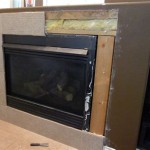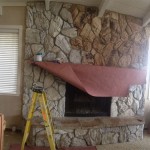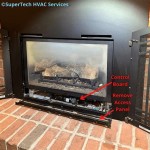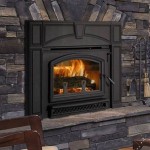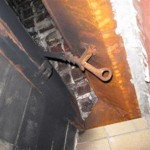Average Cost of Installing a Gas Fireplace Insert
Gas fireplace inserts provide an efficient and aesthetically pleasing way to heat a home. Replacing an existing wood-burning fireplace with a gas insert offers numerous benefits, including improved energy efficiency, reduced emissions, and enhanced convenience. However, understanding the associated costs is crucial for homeowners considering this upgrade. The total expense involves various factors, ranging from the insert itself to installation and any necessary modifications to the existing fireplace structure.
The overall cost of installing a gas fireplace insert can vary significantly depending on the insert model, the complexity of the installation, and regional labor rates. A general estimate can range from $3,000 to $8,000 or more, encompassing the unit price, installation fees, and any supplemental charges. This overview delves into the specific components contributing to the total cost, providing a comprehensive guide for homeowners planning this home improvement project.
Gas Fireplace Insert Unit Cost
The primary expense is the gas fireplace insert itself. Prices fluctuate substantially based on several determinants, including the unit's heating capacity (measured in BTUs - British Thermal Units), its size, design intricacy, features, and the manufacturer's brand reputation. Basic gas inserts, offering fundamental heating capabilities and simpler designs, typically reside on the lower end of the price spectrum. These models often lack advanced features such as remote controls, variable flame height settings, or elaborate aesthetics.
Mid-range gas inserts offer a balance between price and features. These models may incorporate features like remote controls, thermostatic control, and more realistic flame patterns. The materials used in their construction may also be of higher quality, contributing to enhanced durability and aesthetic appeal.
High-end gas fireplace inserts represent the premium segment of the market. These units boast advanced technologies, such as modulating gas valves for precise temperature control, realistic log sets, and various customization options. They often have larger viewing areas and more elaborate designs crafted from high-quality materials like cast iron or stainless steel. These inserts focus on both performance and aesthetics, emulating the look and feel of a traditional wood-burning fireplace more closely.
Factors influencing the unit cost include:
- BTU Rating: Higher BTU ratings indicate greater heating capacity, leading to increased prices.
- Size and Dimensions: Larger inserts typically cost more due to increased material usage and manufacturing complexity.
- Features and Technology: Advanced features like remote controls, thermostatic control, and realistic flame technology escalate the price.
- Aesthetics and Design: Ornate designs, high-quality materials, and intricate detailing contribute to a higher unit cost.
- Brand Reputation: Established brands with a history of reliability and performance often command premium prices.
It is crucial to thoroughly research different models, comparing features, specifications, and prices to identify the insert that best aligns with heating requirements and budget considerations.
Installation Costs of a Gas Fireplace Insert
Installation costs encompass a significant portion of the overall expense. These fees cover the labor involved in preparing the existing fireplace, installing the gas line, connecting the venting system, and ensuring the insert functions correctly and safely. Installation should be performed by a qualified and licensed professional due to the complexities involved with gas lines and venting systems.
Preparation of the existing fireplace often involves cleaning the firebox, inspecting the chimney for any structural damage, and ensuring it meets current safety standards. In some cases, the chimney may require relining or repairs to accommodate the gas insert's venting requirements. This can add substantially to the overall cost. The professional will ensure the fireplace opening is properly sized to accommodate the new insert.
Gas line installation involves running a gas line from the main gas supply to the fireplace location. This typically requires obtaining the necessary permits and adhering to local building codes. The complexity of this process depends on the distance between the gas supply and the fireplace, as well as any obstacles encountered during installation, such as walls or flooring. This also includes safety checks like testing for gas leaks. An improperly installed gas line represents a significant safety hazard.
Venting system connection is another crucial aspect of the installation process. Gas fireplace inserts require a proper venting system to safely exhaust combustion byproducts. Depending on the type of insert and the existing chimney structure, the venting system may need to be modified or replaced. Direct vent inserts, for example, use a sealed system that draws air from outside and vents exhaust directly outside, often through a wall. B-vent inserts utilize the existing chimney for venting.
Factors influencing installation costs include:
- Complexity of Installation: Difficult installations, such as those involving extensive modifications to the existing fireplace or chimney, will increase labor costs.
- Gas Line Installation Distance: Longer gas line runs require more materials and labor, leading to higher costs.
- Venting System Modifications: Repairing or replacing the venting system can add significantly to the overall expense.
- Permit Fees: Local building permits are typically required for gas fireplace insert installations.
- Labor Rates: Regional labor rates vary depending on the location and the contractor's experience and expertise.
Obtaining multiple quotes from qualified installers is recommended to compare pricing and ensure a competitive rate.
Additional Costs Associated with Gas Fireplace Insert Installation
Beyond the unit cost and installation fees, several potential additional costs should be considered when budgeting for a gas fireplace insert installation. These expenses can arise from unforeseen issues or optional upgrades.
Chimney repairs or relining represents a significant potential additional cost. If the existing chimney is damaged or does not meet current safety standards, repairs or relining may be necessary. Chimney relining involves installing a new liner inside the existing chimney to ensure proper venting and prevent carbon monoxide leaks. This can be a costly undertaking, but it is crucial for safety.
Electrical work may be required if the gas fireplace insert includes features such as a blower fan or remote control. Running electrical wiring to the fireplace location can add to the overall cost, especially if new circuits or outlets are needed.
Framing and finishing costs may arise if the installation requires modifications to the surrounding wall or hearth. This may include building a new frame to support the insert or adding decorative finishing touches to blend the insert seamlessly with the existing décor. Considerations should be made for materials and labor requirements for these structural changes.
Permit fees are generally required for gas fireplace insert installations to ensure compliance with local building codes. These fees vary depending on the jurisdiction and the scope of the work. It is important to verify the specific permit requirements with the local building department.
Optional upgrades, such as decorative log sets, remote controls, or thermostat controls, can further increase the overall cost. While these upgrades are not essential, they can enhance the aesthetics and functionality of the gas fireplace insert.
Examples of potential additional costs:
- Chimney Repair/Relining: Ranges from $500 to $5,000 or more depending on the extent of the damage and the chosen relining method.
- Electrical Work: Ranges from $100 to $500 depending on the complexity of the wiring and the need for new circuits.
- Framing and Finishing: Ranges from $200 to $1,000 depending on the scope of the work and the materials used.
- Permit Fees: Typically range from $50 to $200 depending on the location.
- Optional Upgrades: Prices vary depending on the specific upgrade.
It is prudent to obtain a detailed estimate from the installer that includes all potential costs and to inquire about any potential unforeseen expenses that may arise during the installation process. This proactive approach facilitates accurate budgeting and avoids unwelcome financial surprises during the project.

How Much Does A Gas Fireplace Insert Cost Forbes Home

How Much Does A Gas Fireplace Cost Fireplaces Direct Learning Center

How Much Does A Gas Fireplace Insert Cost To Install 2024

How Much Does It Cost To Install A Gas Fireplace Homeserve Usa

Gas Fireplace Cost Guide Unit Add Ons Installation More

How Much Does A Gas Fireplace Insert Cost To Install 2024

Gas Fireplace Installation Cost Dbs Inc

Estimated Page Fireplaces Stoves Inserts Wood Gas Pellet

Estimated Page Fireplaces Stoves Inserts Wood Gas Pellet

2024 Gas Fireplace Insert Costs
Related Posts

